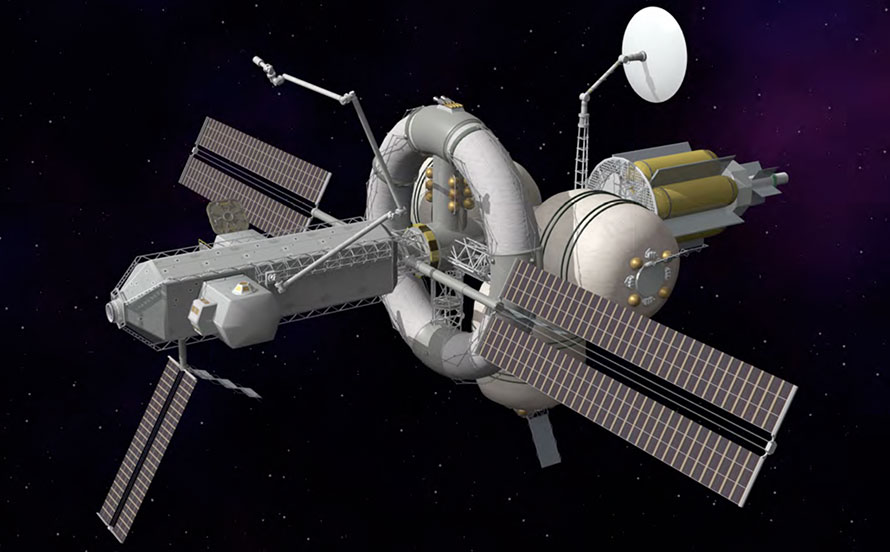Safe habitats for crews operating well beyond Low Earth Orbit and outside Earth’s protective magnetosphere.
 Proposed Nautilus-X Extended Duration Multi-Mission Space Exploration Vehicle. Image: Mark Holderman, NASA
Proposed Nautilus-X Extended Duration Multi-Mission Space Exploration Vehicle. Image: Mark Holderman, NASA
DESCRIPTION
Crew habitats are one of the most critical parts of space infrastructure. Crews operating well beyond Low Earth Orbit and outside the Earth’s protective magnetosphere will be exposed to about twice the constant cosmic radiation and much more solar radiation, including dangerous but intermittent solar mass ejections, compared to locations in LEO. The crews in locations beyond LEO are also farther away from assistance and cannot just land in an emergency. Providing artificial (centrifugal) gravity using rotating or tethered modules may be necessary to maintain better long-term crew health for long durations spent in microgravity locations. (Note that this milestone refers primarily to smaller crew habitats launched from the ground, for trips and at logistics bases, and does not include the much larger residential settlement habitats that would be constructed in space.)
COMPONENTS (required capacities)
Crew habitats beyond Low Earth Orbit must be able to
- Provide redundant life support systems for the crew that will last 50% longer than the designated mission length or long enough for a rescue mission to reach the crew.
- Carry sufficient food and water for the crew and/or recycle water and grow food.
- Protect against constant cosmic radiation (heavy, fast nuclei from outside the solar system).
- Protect against intermittent solar radiation (solar mass ejections and general solar radiation)
- Support possible designs for creating artificial (centrifugal) gravity with rotating habitats.
- Assist in support of the crew’s physical and mental health. For long trips/stays beyond cislunar space, this includes making the habitats sufficiently large.
BARRIERS
- Lack of incentives and resources to construct, maintain and operate habitats outside of LEO that can provide the additional personnel protections needed outside of LEO.
- Lack of consensus over the difficulty of and need for creating artificial (centrifugal) gravity for long-duration flight.
- Lack of consensus over how to best protect crews against space radiation and how much protection is needed.
COMPLETION
This milestone can be considered achieved when a crew module or habitat that supports a crew for six month rotation periods, with effective radiation protection (equivalent to or less than radiation exposure levels to crews in LEO), is in place at GEO or any cislunar orbit or location.
MORE OF THE NSS ROADMAP TO SPACE SETTLEMENT:







